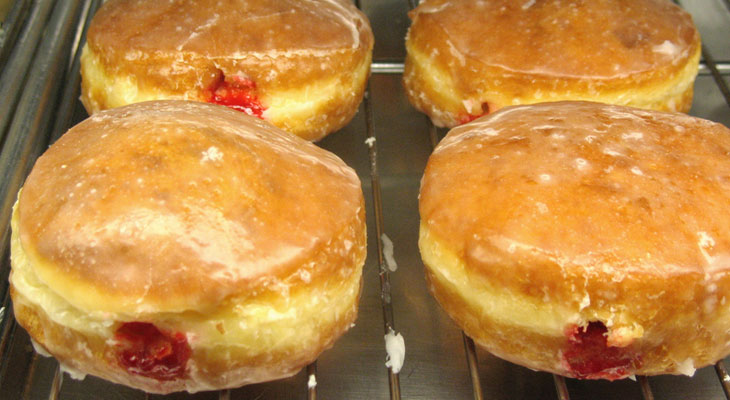The Tour de France--In Terms of Jelly Donuts

Mavis via flickr | http://bit.ly/1KPyaPX
(Inside Science Currents Blog) -- With today being National Donut Day, and this year’s Tour de France coming up in the next month, I recalled how a late MIT physicist known for his work in the Manhattan Project once combined donuts and the famous bicycle race to teach a lesson about energy. Count on science to mash together two different things in unexpectedly fun ways. So in honor of National Donut Day, we present to you a slightly updated version of one of the very first Inside Science News Service articles I wrote with Rory McGee Richards all the way back in July 22 1999:
Like jelly donuts? How about 30 a day? Well, that's the number of donuts you would have to eat to get enough calories to compete for just "one day" during the Tour de France.
Traveling approximately 2000 miles in 23 days, a Tour de France cyclist eats the equivalent of 30-32 jelly donuts per day in calories, according to an estimate once performed by the late MIT physicist Philip Morrison. Morrison conducted an investigation of the Tour de France for his 1987 PBS documentary series "The Ring of Truth." (In comparison, a normal adult male eats the equivalent of 12 jelly donuts a day, assuming that each jelly donut is about 250 calories.)
So where do all those donuts go? During a typical day's race, Morrison said, a biker burns off about 1 or 2 jelly donuts worth of energy in overcoming friction and manipulating his bike. Propelling the bike forward in a typical day's race requires only about 6 jelly donuts of energy.
Where do the remaining 25 donuts of energy get spent? You guessed right--it's wasted--in the form of heat. Now, the human body is a relatively efficient machine. But like all machines, it unavoidably generates heat which cannot be employed to perform useful work. This heat--20-25 donuts' worth, according to Morrison--is mainly carried away in the form of sweat created by exertion.
Competitors drink about 4 gallons of water a day, and this water evaporates from their bodies to carry away the heat. What keeps them cool enough to endure the race, says Morrison, is the streaming wind that hits their face.
In the years since we wrote that Inside Science piece, I have enjoyed finding other examples of how athletes can have fun thinking in terms of donuts. If you’re a runner, this infographic approximates how many more donuts you will be able to eat without gaining weight after running different distances, from a 5K to a full marathon. And it’s worth mentioning another unrelated combination of bikes and donuts, known as the Tour de Donut, in which riders’ times are reduced by a few minutes with every donut they eat at a rest stop. But even if you’re not a donut-lover or bicyclist, it’s not hard to find many ways of how one form of energy transforms into another.
(Update 7/1/15: In anticipation of the Tour de France this weekend, our friends at Business Insider have created this infographic that shows many other food items. Thanks to my colleague Michael Greshko at Inside Science headquarters for researching and providing data to our BI colleagues for the infographic.)

